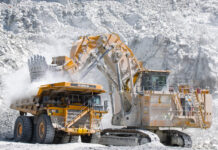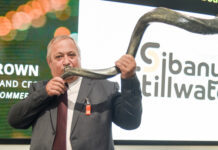
THE reason investors buy shares in diversified mining companies is to lower the risk presented by volatile and cyclical commodity markets. That approach, however, seems to be suffering something of an identity crisis, judging from Anglo American CEO Duncan Wanblad’s bold declaration in February.
Closing the presentation of the group’s 2023 results, which showed that basic earnings fell a disappointing 58%, he said he was determined to “once and for all” transform Anglo into a “through-the-cycle” earnings generator. Anglo is more than a century old, but Wanblad probably has in mind the past two years, during which he was the group’s CEO. In this time Anglo has gone from sector leader to laggard. Barclays Capital calculates that the mining group is trading at a 35% discount to the sum of the parts.
Wanblad took over from Mark Cutifani, who spent the last three of his nine years at the group riding the crest of a commodity price wave. So lauded was Anglo between 2018 and 2021 that it’s easy to forget how difficult Cutifani’s first three years were when, not so incidentally, commodity prices were cratering. Perhaps Wanblad has a point about Anglo’s vulnerability to the cycle.
The past year is a case in point. Amplats, Anglo’s platinum miner, last year contributed $1.5bn to group earnings before interest, tax, depreciation and amortisation (ebitda), compared with $7bn in 2021. De Beers also fell off precipitously in 2023, losing money in the second half of Anglo’s 2023 financial year, whereas it chipped in with $1.5bn in ebitda two years earlier.
Wanblad’s response has been to press urgently on with a portfolio review that starts with a common-or-garden business renewal programme and other sensible innovations — such as certain proximal synergies between neighbouring mining properties — but then extends into whether Anglo has the right commodity mix. Wanblad says Anglo is correctly positioned towards energy transition, food security and maintaining living standards. But he also says nothing is off the table in his search for a more predictable earnings trajectory.
The ‘rump’, the structure, & De Beers (again)
What might this portend? Straight up, analysts think Anglo’s investment in De Beers needs the most urgent of reviews. There’s no denying that the historic diamond miner hangs heavy in Anglo’s closet. Of $2.6bn in impairments Anglo wrote last year, $1.8bn was for De Beers, amid a dramatic decline in diamond prices. These are not expected to revive significantly this year. Anglo values its 85% in De Beers at $7bn at present, but that “seems too high” a figure, according to US bank Jefferies, which has a valuation of less than $4bn for De Beers.
“We continue to think that the asset should be disposed of,” says Berenberg Bank analyst Richard Hatch about De Beers. “A sale to a luxury business could be sensible, but we remain sceptical as to whether this would be at the carrying value that Anglo includes in its valuation.”
A second area of possible restructure is in Anglo’s South African “rump”. Its spin-off is hardly a new idea; in fact, as a remedial measure it’s met with eyerolls by Anglo staff. But seeing that Wanblad voiced concerns about Anglo’s structural complexity, the roles of 79%-owned Amplats and 70%-owned Kumba Iron Ore are back in the crosshairs.
“If I had a blank piece of paper I would not draw the structure this way,” Wanblad told the media. This might also mean bringing the subsidiaries into Anglo’s centre by buying out minority shareholders — another frequently circulated idea in the group. A tighter Anglo core certainly seems a Wanblad hallmark so far. Of $1bn in announced operational expenditure savings, half are already booked in head office cost cuts. These include Amplats, which may cut 3,700 jobs, and Kumba, where a further 490 jobs are vulnerable. A further $1.5bn in capex reductions is also on the cards.
If I had a blank piece of paper I would not draw the structure this way – Duncan Wanblad, Anglo American CEO
Sweeping portfolio changes are tricky propositions, however. Today’s albatross could be tomorrow’s golden eagle, as commodity markets will attest. “The goal is to simplify the portfolio and make it less complex. The choices must be made under the constraints of not ceding significant ebitda from the process,” says Bernstein analyst Bob Brackett. According to Brackett, a “careful eye” has to be kept on Anglo’s target of net debt to ebitda in the event of macroeconomic conditions deteriorating.
What may certainly help Anglo is that the commodity markets may soon be at the company’s back, while Wanblad’s rebasing exercise — especially in terms of production guidance cuts that so worried the market in December amid a one-fifth decline in Anglo’s share price — appears complete.
“We believe the risk/reward for Anglo is attractive after significant underperformance over the past two years,” say analysts at Swiss bank UBS. There is “meaningful” upside for the copper price as well as for diamond and platinum group metal prices — a positive fluctuation in ever volatile commodity prices that may, ironically, prompt Wanblad to exercise restraint.
A version of this article first appeared in the Financial Mail.











